This was published 6 years ago
Modern air travel: How air travel has changed - why are passengers still whinging?
By Michael Gebicki
What a decade it has been for air travel. There are more of us in the air, we're flying more often, it's safer than ever before, Australian travellers now have a greater choice of carriers and the cost is down.
Airfares have fallen dramatically over the decade. Measured against the number of working hours it now takes to put wings on our travel plans, in 2017 we're flying for less than ever before. From east coast Australia you can hop aboard a flight to Europe in peak season with a premier airline for about $1500. Lower fuel prices, more efficient aircraft, more seats and strong competition are behind the fire-sale prices.
There are new birds in our skies, flying in from the north. While most of the European carriers stopped servicing Australian cities years ago, China-based airlines have galloped in. Ten years ago there was just one Chinese airline flying into Australia. Today, there are seven. Driving this push from Chinese airlines is the rise of Chinese tourism. In the year to June 30, 2016, Australia had 1.136 million visitors from China, a rise of 22 per cent on the previous year.
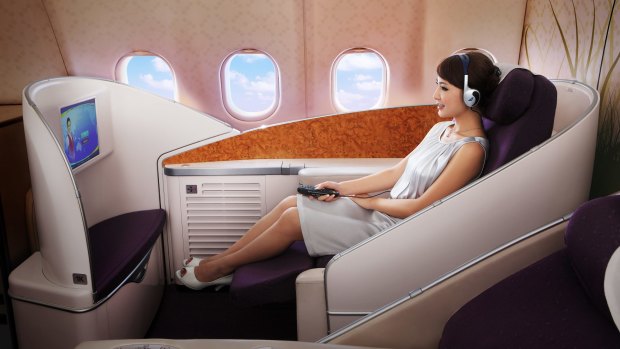
The past 10 years have ushered modern cabin designs.
China-based airlines are highly competitive, offering some of the sharpest fares on the one-stop route to Europe. Off-peak economy saver fares from Melbourne or Sydney to Paris start at just more than $1000, and fares like that put pressure on other airlines to keep prices low.
Another positive, with flights between Australian cities and more than 10 cities in China, these carriers open new stopover options for travellers heading to Europe. Shanghai and Beijing need no introduction but some of the lesser known Chinese cities will show you a very different side of the people's republic.
See also: Air rage: The real reason passengers misbehave on flights
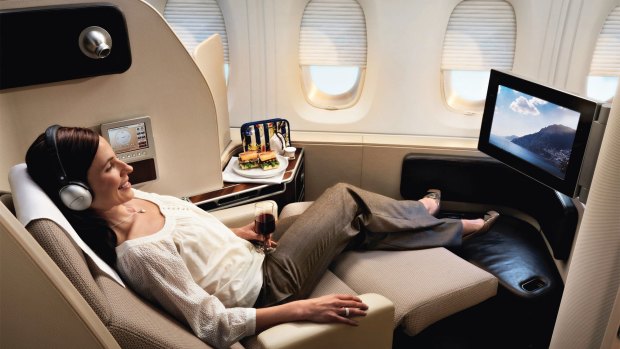
First class in the Qantas A380.
Remember when you were told to turn off all personal electronic devices until the seatbelt sign was turned off? That still happens occasionally, but unless told otherwise by flight crew you can assume that mobile phones, tablets and e-readers may be used while on an aircraft, so-called gate-to-gate usage. In the past, regulators responsible for air safety feared that signals from a smartphone or tablet could interfere with an aircraft's navigation systems. Late in 2013 the US Federal Aviation Administration rewrote the rules governing the use of PEDs aboard US carriers, based on expert advice that interference from PEDs was not a threat to the safety of most commercial aircraft.
In Australia the Civil Aviation Safety Authority followed suit, recommending that airlines use their discretion to assess the expanded use of PEDs. Devices capable of transmitting and receiving signals must be switched to flight mode, so no phone calls, texts or emails.
Fly with a full-service carrier these days, however, and you can probably check your email, make VOIP calls and broadcast the shortcomings of your airline over social media thanks to the wonders of in-flight Wi-Fi.
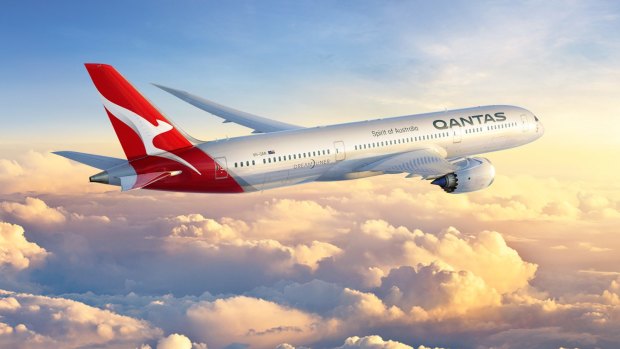
A Qantas 787 Dreamliner. The aircraft is scheduled to begin a non-stop service between Australia and Britain in 2018.
In-flight Wi-Fi is the must-have for airlines looking to keep their passengers in work mode, or at least entertained and compliant. Most of the legacy carriers servicing Australian cities offer in-flight Wi-Fi, either on a time or volume basis, and prices are reasonable.
Front runner in the provision of in-flight Wi-Fi is Emirates, which offers 20MB of free Wi-Fi within the first two hours of log in, with another 150MB priced at $US9.99. One problem with free Wi-Fi is limited bandwidth. If a significant number of passengers are online, even downloading emails can become tedious.
The past decade has also seen the advent of premium economy as the class of choice for passengers on long-haul flights looking to escape the squeeze of economy class without the high cost of a business-class fare.
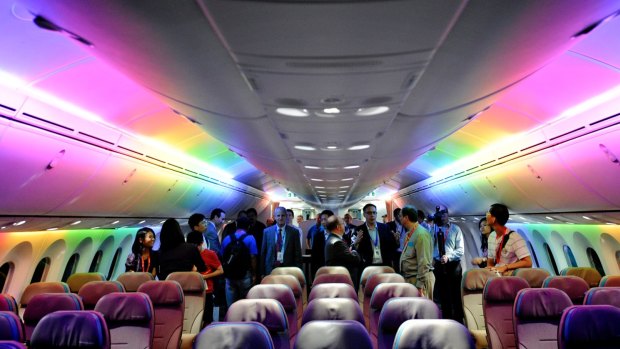
Press members tour the Boeing 787 Dreamliner's cabin with its versatile LED lighting system. Credit: Bryan ven der Beek
See also: Flight attendants: What they're really thinking about passengers
Premium economy comes with a few frills that distinguish it from economy, but the main reason to choose the class is a better seat, and more legroom. Most premium economy seats offer a pitch of 96.5 centimetres, about 15 centimetres more than economy class passengers get on the same flight. That's enough for even tall flyers to stretch out and not feel aggrieved when the passenger in front reclines their seat.
Width is about 48.3-49.5 centimetres, which is at least 3.8 centimetres better than a long-haul economy class seat. That's less than the length of your little finger but the difference in comfort is surprising.
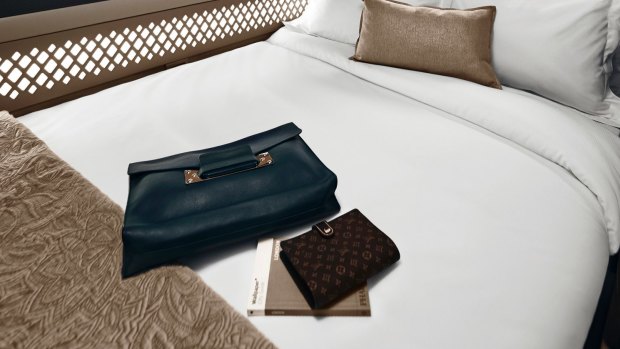
Etihad's The Residence is a three-room suite with a separate bedroom and en suite shower.Credit: Jamie MacFadyen
The Qantas-Emirates partnership of 2012 was a turning of the page for Australian flyers. Instead of sending Europe-bound flyers via Singapore, Qantas began using Dubai as its hub, with Emirates' extensive network to connect passengers to cities throughout Europe as well as the Middle East and Africa.
The Airbus A380 made its first passenger flight a decade ago and it's become a flyer's favourite, valued for its roomy interior and smooth, quiet manners, especially among premium-class flyers who reap the full benefits. This is the aircraft that has allowed designers to let their hair down and offer such extravagant features as Etihad's The Residence, a three-room suite with a separate bedroom and en suite shower.
However, airlines are falling out of love with the superjumbo A380, showing a distinct preference for the economies offered by wide-bodied twin-engine aircraft. One of the most exciting, and one that points the way of the future, is Boeing's 787 Dreamliner, the first to be constructed extensively from carbon fibre reinforced polymer.
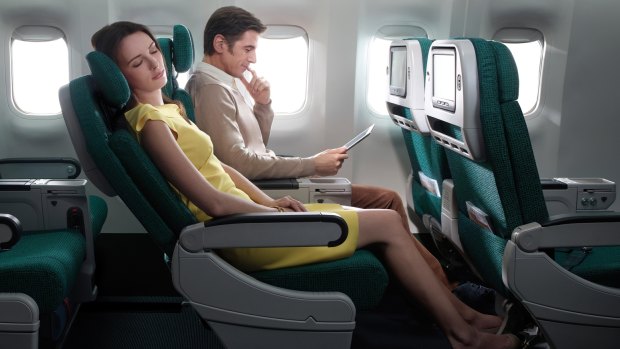
Premium economy on Cathay Pacific.
See also: What to do if there's a disruptive passenger on your plane?
The past decade has seen low-cost international carriers entering the Australian market, offering cheap flights via Singapore and Kuala Lumpur to cities on networks that stretch across Asia. LCCs are a major growth sector in the airline industry and these carriers have established a firm foothold. Scoot now flies to four Australian cities, Air Asia to five.
Despite the pared-down service and sardine-can seating, the cheap fares are proving too hard to resist. The LCCs are here to stay, and they're only giving us what we're prepared to pay for since experience proves that many passengers are willing to sacrifice comfort if it gets them a cheaper airfare.
One of the ways the LCCs turn a profit is with the charges they impose for checked-in baggage, seat selection, headphones and meals. These ancillary charges are a not-so-welcome facet of discount air travel over the past decade, but you can expect airlines to come up with yet more ingenious ways to ice their cakes.
The decade has also spawned a new concept, air rage. The fuss over seat recline, squabbles over window shades, the battle of the overhead bins – and it's mostly down to the way we're flying. As airlines get better at filling their planes we're more stressed, our personal space is invaded and we're more inclined to take offence when our neighbour hogs the armrest or the seat in front swings back as soon as the "fasten seatbelts" sign goes off.
The announcement of the first non-stop service between Australia and Britain by Qantas chief executive Alan Joyce is a game changer for the airline industry. Scheduled to commence in 2018, after Qantas takes delivery of the 787-9 Dreamliner that will operate on the 17-hour journey, this will be one of the world's longest flights.
More impressive still would be a non-stop service between Australia's east coast cities and Britain. That is testing the range of even the longest-legged aircraft, although not between other European hub cities such as Rome and Frankfurt, and that flight is probably waiting in the wings.
MILESTONE MOMENTS IN AIR TRAVEL
Spirit Airlines transitions to an ultra low-cost carrier, March 6, 2007, establishing a template for low-cost carriers around the world.
Airbus A380 makes its first commercial flight, operated by Singapore Airlines from Singapore to Sydney, October 25, 2007.
Boeing 787 Dreamliner makes its first commercial flight, with All Nippon Airways, October 27, 2011.
Qantas grounds entire fleet, October 29, 2011, locking out staff in response to unions' industrial action.
Qantas establishes a major alliance with Emirates, moving its hub for European flights from Singapore to Dubai, September 2012.
Malaysia Airlines flight MH17 is shot down by a Russian missile over eastern Ukraine, July 17, 2014.
Disappearance of Malaysia Airlines MH370, March 8, 2014, cause unknown.
Dubai International Airport becomes world's busiest international hub, overtaking London Heathrow, 2014.
Samsung Galaxy Note 7 banned from most airlines in October 2016 as fire risk focuses attention on the problem of volatile lithium ion batteries.
United Airlines forcibly removes a passenger from his allocated seat on an overbooked flight, April 9, 2017, UA settles lawsuit for undisclosed sum.
See also: 20-hour, non-stop flights: Could this be the end of the stopover?
See also: New 'pay as you go' lounge opens at Melbourne Airport
Sign up for the Traveller newsletter
The latest travel news, tips and inspiration delivered to your inbox. Sign up now.